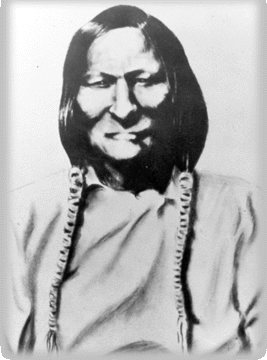Cheyenne Indians

Chief Black Kettle of the Cheyenne Indians
The Cheyenne Indians first lived throughout the eastern part of what is now the United States. Their tribes lived in villages and were known to be great farmers, as are many Native American tribes. Eventually many of the Cheyenne started moving to the west and southwest and they ended up in the plains areas, and also in the woodland areas of the Mississippi River Valley. Many of the Cheyenne Indians resided in the Great Plains area of the United States, primarily just east of the Rockies and west of the Mississippi River.
The Cheyenne Indian language originated from the Algonquins and their alphabet contained only fourteen letters, which they could combine to for words and whole phrase. Their language is still alive but it is hanging on by a thread. The government wants them to be an English speaking tribe and wants their language to be extinct. Today many of the Cheyenne Indians are settled in the Montana and Oklahoma areas, where they have government granted reservations.
The Cheyenne Indian people were a very intelligent tribe and everyone had their role in making their lives work. The Cheyenne women would gather wood for their fires and also did all the cooking and harvesting of berries and nuts. The Cheyenne men took care of all of the hunting and they also were fine wood craftsmen who made bows and arrows for hunting and pipes for smoking tobacco that they grew. Music and fun was common among the tribal villages nightly after dinner time, where they would dance and enjoy before nightfall. The smoking of the peace pipe that so many people hear of in stories about Native Americans was a very important custom to the Cheyenne Indians and this was a very spiritual ritual where they offered prayers before the first smoke. Many of the Cheyenne men and women were known as great storytellers and they passed their stories and history from generation to generation. In Oklahoma and Montana today there is a combined population of around twenty thousand Cheyenne living on reservations and independently. They work hard to try and preserve their culture and history and as stated before many are trying to save their language from becoming extinct.
